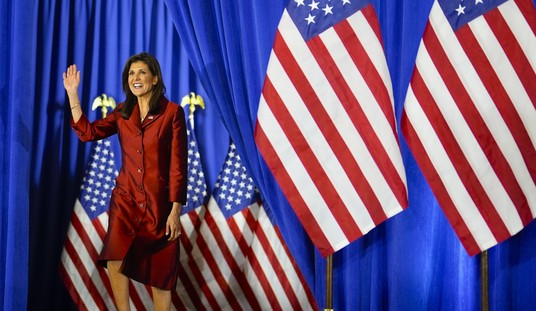Now that Phase One and Phase Two bills for dealing with the coronavirus pandemic’s economic damage have passed, Congress will take up Phase 3 — otherwise known as The Big One. Politico’s Playbook predicted this morning that the text of the massive “go big” plan should drop sometime today, but that its parameters are largely known already. The new bill will authorize more than a trillion dollars in spending to stem the bleeding, driven by Donald Trump’s desire to stabilize the markets as well as the economic situation for workers and small businesses:
NEW MOVEMENT … SENATE MAJORITY LEADER MITCH MCCONNELL is expected to put out his PHASE THREE coronavirus bill today, laying a marker for the consensus view of Senate Republicans on what’s expected to be a $1 trillion-plus package.
THEN, as early as sometime today, MCCONNELL and his team will begin talking with Senate Minority Leader CHUCK SCHUMER to begin negotiations over the package. We don’t know how long this process is going to take, or when to expect a vote.
— MCCONNELL said this late Wednesday on the Senate floor: “I recommend senators stay close. While we don’t know exactly how long it will take to get this done, everyone knows that we need to do it as quickly as possible because the situation demands it. So we’ll keep senators posted. I hope they don’t go too far away.”
It’s a massive amount of spending, far outstripping the early 2009 stimulus bill pushed by Democrats and signed by Barack Obama. The Washington Post recalls that episode in its preview of Phase 3, arguing that Trump is taking a risk with his base and fiscal conservatives by backing any kind of stimulus package of this scope. Support for these stimulus bills is “a sea change on the political right,” they report:
The administration on Wednesday outlined a $1 trillion plan, which includes $500 billion in cash payments to individual Americans and $300 billion toward helping small businesses, as well as $50 billion for airlines and $150 billion for other affected sectors.
Trump’s hastily crafted stimulus, which has won early support from most Republican lawmakers, marks a sea change on the political right. The president and many of his conservative allies rose to power on the strength of a grass-roots movement forged in opposition to the bank bailouts during the 2008 financial crisis and President Obama’s subsequent economic stimulus package.
Scrutiny of Trump’s plan continues to grow as some Republicans express unease about its scope and leading Democrats warn against federal giveaways to corporations without accountability measures that would ensure taxpayer money does not fund stock buybacks or executive pay.
And there is some trepidation within the administration about the political risks associated with the perception that industries spend money as they wish — as well as uncertainty about how, exactly, all of the money would be spread around, according to officials involved in the discussions who spoke on the condition of anonymity to describe the private talks.
That’s not entirely unfair, but it is substantially unfair. First, the bank bailouts began in the George Bush administration, and had some significant GOP support (as well as some significant opposition). After the election, Republicans did oppose the 2009 stimulus bill, but not because they opposed any kind of a stimulus bill. Republicans in the House and Senate minorities wanted to direct stimulus in different directions than Democrats did. In fact, Republicans demanded to be at the table to help write the bill, but Nancy Pelosi locked them out and Obama offered his famous quip: “I won.”
Republicans turned out to be correct in their opposition to the form of stimulus provided in 2009, too. Instead of attempting to shore up the damage directly by dealing with the collapsed value of Fannie Mae and Freddie Mac bonds, it instead aimed at infrastructure spending, block grants to states, green-energy subsidies, and social-engineering experiments like Cash for Clunkers. It wasn’t an emergency bill as much as it was an agenda-funding bill, and it produced a flabby and undynamic recovery. The GOP’s ideas at the time weren’t actually all that much better either, though; rather than use precision to fix the damage, they also offered up tax cuts and other long-range agenda items that may have otherwise had value but were ill suited to an acute crisis.
Fiscal conservatism has a role to play even in massive stimulus packages, I argue in my column at The Week. In fact, it’s more critical than ever in avoiding everything that usually goes wrong with these efforts:
Still, while fiscal conservatism might not apply to the overall approach by Congress to the economic crisis, it should inform how to best use the funds it will spend to blunt it. That means targeting the money where the damage is most acutely felt rather than to commit it to longer-term programmatic goals. Subsidiarity is key to making the biggest impact, while trying to leverage the crisis for re-engineering the economy is the best way to ensure that the money and the opportunity get wasted. …
This rescue package should focus sharply on the points of the economy where government inflicted the most damage. The highest priority has to be consumers sidelined by business closures — putting enough money in their pockets to keep them engaged in the economy. Fortunately, both parties have more or less come around to direct payments over the next two months, which will cost around $500 billion but will keep families from tipping over into ruin. That added spending power will boost local businesses as well, keeping some dynamism in the economy while keeping families mostly at home.
Next, funds needs to target the most critical costs of keeping small businesses running through the crisis. Either that also means direct payments or perhaps grants and bridge loans to keep operating expenses under control and lease payments made. Former New Jersey governor Chris Christie proposed a wider repeat of the Hurricane Sandy recovery effort, which used HUD’s Community Development Block Grant (CDBG) program to keep small- and medium-sized businesses from shutting down during that crisis. If funds get rapidly deployed into those programs, small businesses such as restaurants and bars can either avoid or limit employee furloughs, also allowing for more resiliency and dynamism in the immediate term and limiting long-term damage.
Both of these approaches have significant scalability, as well. If the effect is not robust enough at first, Congress can direct more funds to bolstering these programs. Refraining from launching expensive long-term programs aimed at political goals will provide even greater flexibility, and furthermore allow more clarity to ensure that these programs work as intended.
When government inflicts massive economic damage as a necessity in a crisis, even fiscal conservatives agree that the same federal government has a responsibility to address that damage. That is all that these packages should be doing, however — not saddling up hobby horses from political agendas and attempting major structural change when structure isn’t the problem.







Join the conversation as a VIP Member